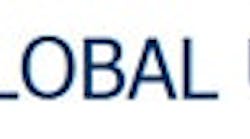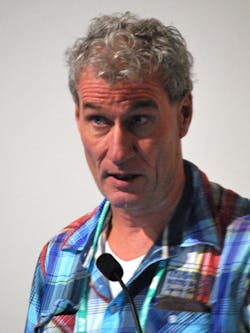Shell streamlines instrument commissioning with bulk editing, reporting
Commissioning process control instruments over and over can take a long time, but engineers faced with commissioning tens of thousands of transmitters and other devices on Shell's immense Prelude floating liquid natural gas (FLNG) vessel decided they had to find a better way.
Connecting, configuring, adjusting and maintaining all those components would have required tens of thousands of man-hours and more, and Shell's engineers knew they just didn't have that much time to spare. Almost finished in South Korea and scheduled to be stationed 125 miles off Australia's north coast next year, Prelude FLNG is the largest floating facility ever built, and it's expected to produce approximately 3.6 million tonnes of LNG per year, and do it in gas fields that were previously thought of as too inaccessible.
The vessel consists of 14 process plants, including a 305-foot turret and flare, inlet and separation facilities, compression and refrigeration units, gas-to-liquid equipment, back-end treatment and storage facilities. Three to four times larger than the average, large LNG tanker, Prelude has 4,000 miles of cable and 60,000 flange connections.
'Error-prone and laborious'
"The main challenge for us has been that, while most of Prelude's physical layer is standardized and most of its systems, equipment and training are certified, the commissioning, replacement and data handling for all of our smart field instruments wasn't standardized. We're using mostly Foundation fieldbus (FF) for monitoring and control and HART for safety," said Rong Gul, senior automation engineer and smart field instrumentation subject matter expert at Shell. "Commissioning a project with thousands of devices to enable a proactive maintenance strategy presents an enormous challenge. Configuring the devices one-by-one is error-prone and laborious—one device may take up to 60 minutes. And, configuration for each device must be verified. For large sites, all this translates into tens of thousands of man-hours in commissioning time."
"Before, a loop-checking and commissioning team could do 10-15 devices per day; on Prelude, they can do 60 devices per day." Shell's Rong Gul on the dramatic cost and time savings the company is realizing during the commissioning of instruments on its enormous FLNG vessel.
Gul and Kyle Dickson, Prelude's control and automation engineer at Shell, and Scott Hokeness, strategic product planning manager for asset optimization at Emerson, presented "Improved commissioning procedures at Shell support on-going proactive maintenance" this week at the Emerson Global Users Exchange 2015 at the Colorado Convention Center in Denver.
Templates and Standards
To develop a standardized commissioning solution, Gul reported that Shell conferred with Emerson Process Management, which was already one of Prelude's main automation contractors. They jointly developed the workflow to streamline device commissioning that is now part of DeltaV, v13, distributed control system and AMS predictive maintenance software. In short, AMS Device Manager users can apply standardized configurations to hundreds of devices in a fraction of the time it used to take, which enables an effective proactive maintenance strategy at a considerably lower cost.
"We wanted a tool to do a blanket application of Shell's global templates, using a device description (DD) file for HART and FF devices," explained Gul. "However, we needed to do proper configuration and commissioning at the beginning to get the right data from our instruments later, and avoid garbage-in and garbage-out data. To develop the right configuration parameters and features, we found 91 parameters that needed to be fixed in a Fisher DVC transducer block and 18 parameters that needed to be fixed in its resource block, and then built Shell's templates into AMS."
"So, all the FF and HART devices needed a template, which is basically a modified DD file that can be changed when we find out what else needs to be configured, and added to the template's Excel file. We can also put them in a Shell corporate database, pick them up later, and adjust them as needed."
To apply its new commissioning strategy, Shell's engineers:
- Inventory devices on project or asset; create and test templates specific to device and revision in AMS, starting from corporate standard settings;
- Create and test commissioning/loop check procedures, which may involve mitigation plans if applied to brownfield sites online; and,
- Verify the device's configuration against its template and appropriate status of the device using the reporting tools. This is necessary because some devices could be accidentally left in simulate mode after testing, or, with safety devices, the write protection could be inadvertently left off.
Gul added that Shell and Emerson's new configuration tool ensures error-free downloads to instruments, reduces troubleshooting during commissioning, and even allows users to pick more specialized parameters when needed. These smart instruments can include control and safety valves, pressure and temperature transmitters, flowmeters, level transmitters, fire and gas-detection devices and other components. "We agree on the settings, test them ahead of time, and identify parameters, such as setting generic bandwidths for diagnostics," said Gul.
100 or 1,000 Transmitters at Once
Hokeness added, "We previously commissioned these instruments individually, but once we write the parameters for typical device, we can now commission 100 or 1,000 at the same time by executing a bulk transfer that writes to each device. And, if we want to make a change, we can run it again in another bulk configuration. It now takes minutes instead of hours."
Gul reported, "These configurations are very consistent with our corporate settings, and once we decide on a workflow, we can inform our loop-checking teams, who prepare and install the devices, download the templates, and configure them in AMS. Besides the bulk-editing, a second important tool is that we now have a reporting solution for quickly checking when we commission a unit or plant. It will tell us exactly if there are any discrepancies between out database and the actual configured devices, and whether we've done a good commissioning job or not. This reporting tool makes sure that the devices we hand over to operations are configured exactly as we wanted them.
"These bulk-editing and reporting tools have given us huge savings in time and labor. Before, a loop-checking and commissioning team could do 10-15 devices per day; on Prelude, they can do 60 devices per day. This adds up to an 80% savings and massive dollars."








